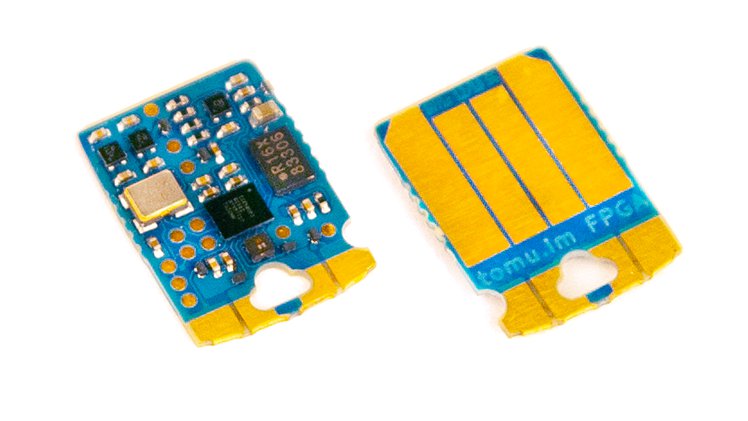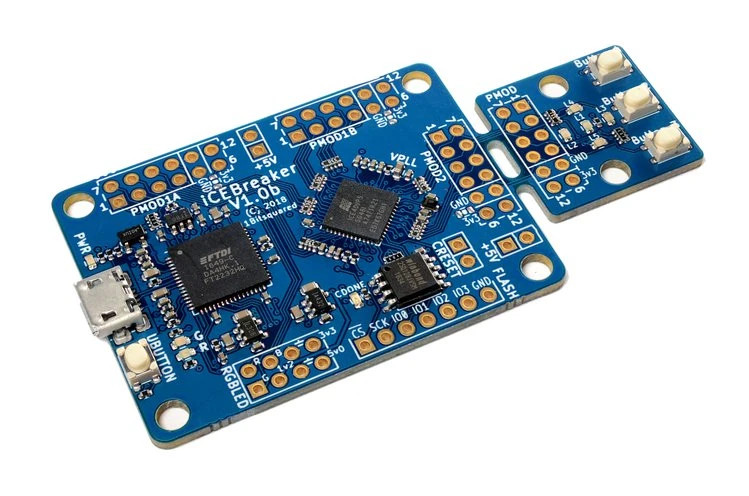The Doomchip ‘on-ice’
Designing hardware for 1992-1993 retro classics
Sylvain Lefebvre
A strange message
Mission statement
-
Design a portable console
-
Specialized graphics hardware
-
Early 1990s retro classics
-
On a Lattice ice40 UP5K FPGA
-
Doom-Comanche crossover
Doom (1993)
by Id software

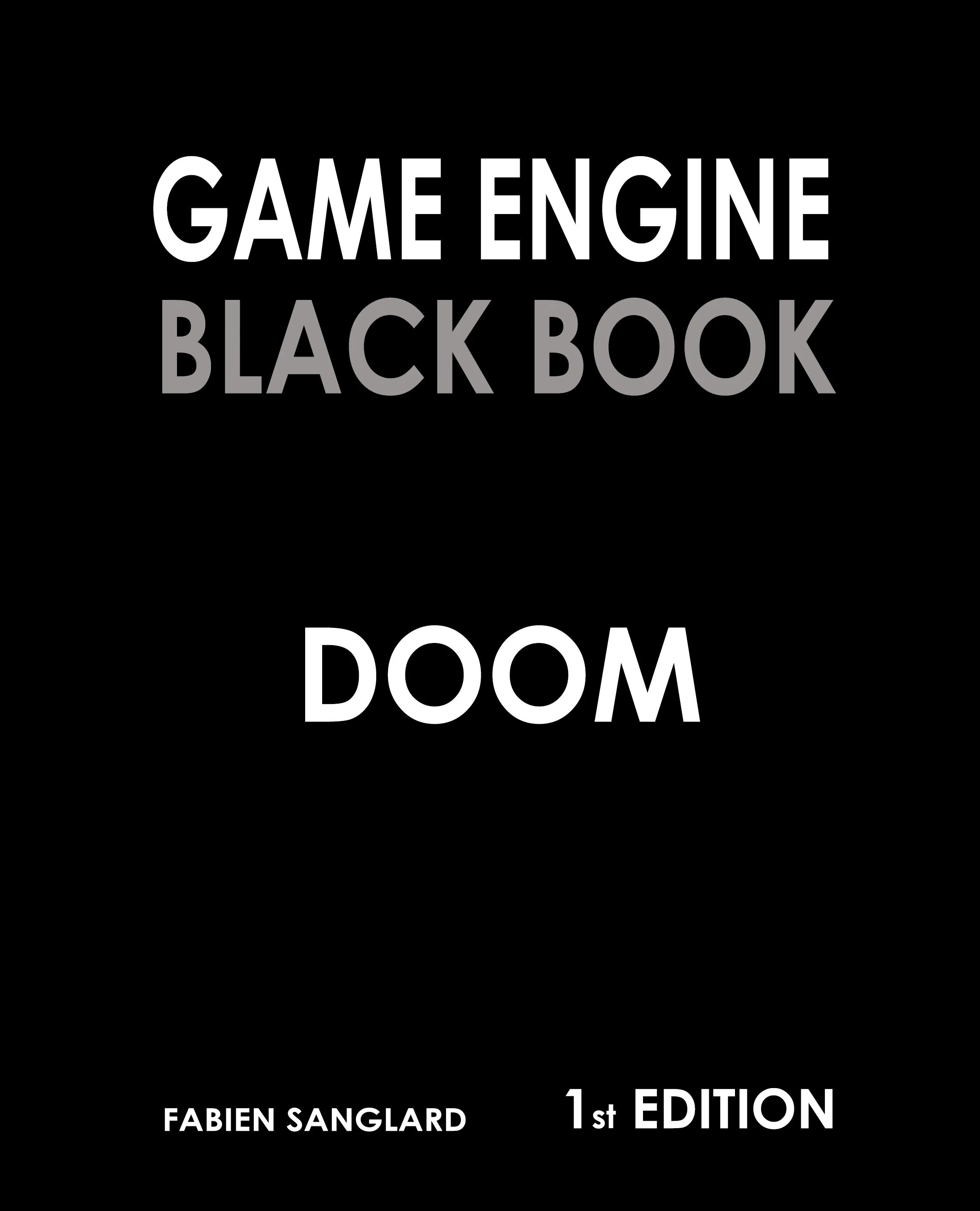
Comanche (1992)
by NovaLogic
Doom source ports
source ports
- Many ports!
- This one for GBA is quite on spot for us
- https://github.com/doomhack/GBADoom
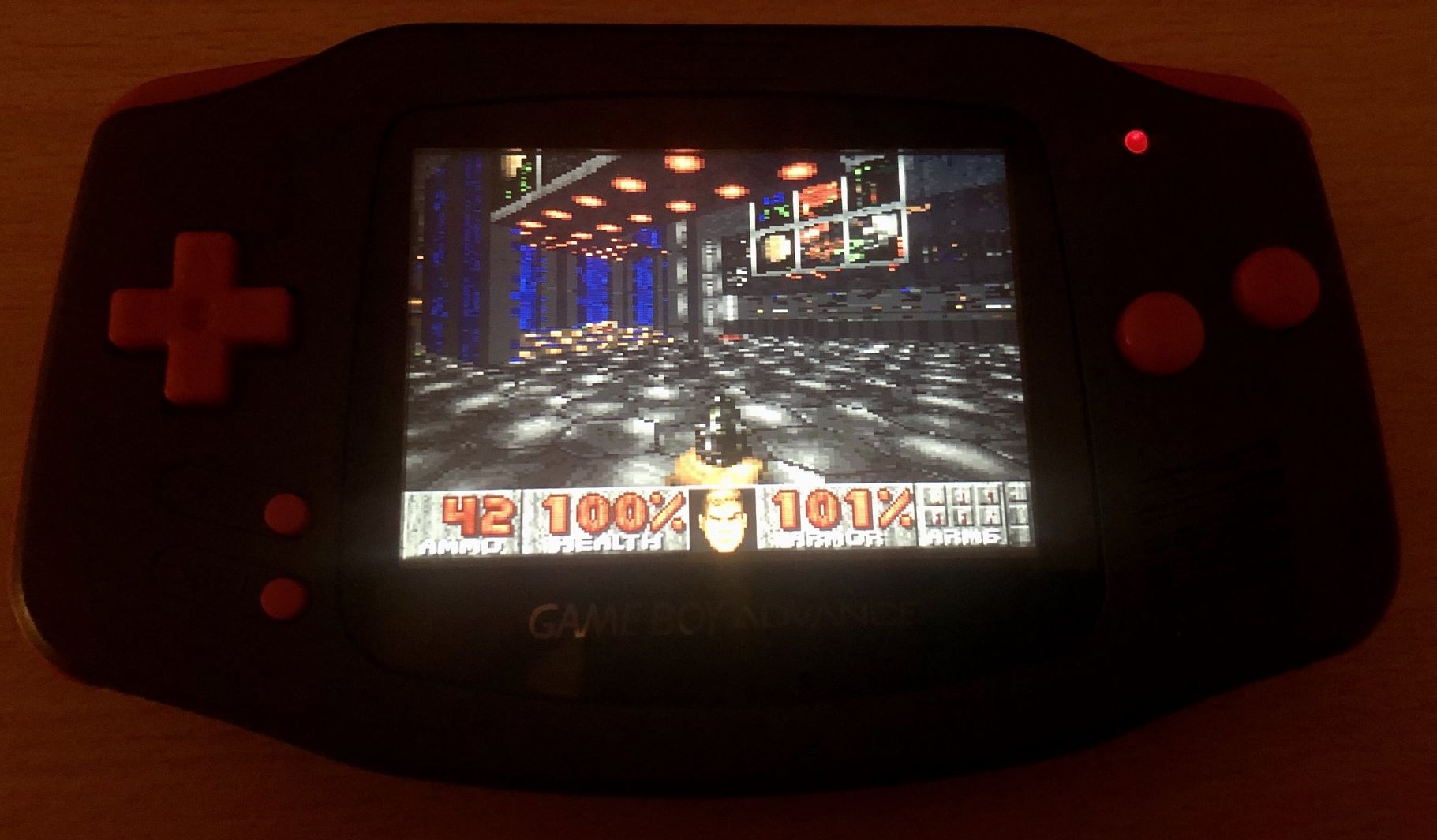
- – 240x160 pixels
- – 256KB RAM, 16.7MHz CPU
- – “Most areas are running at 15-25fps.”
- https://github.com/doomhack/GBADoom

Micro-controller
Doom on lamp MCu
by Nicola Wrachien

Doom nRF5340
by Audun Wilhelmsen
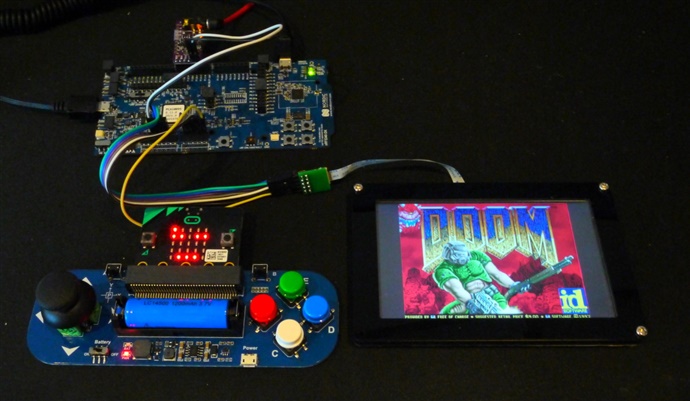
Not a source port
-
We’re tasked with creating a specialized GPU
- Total re-creation
-
Adding a terrain
- Means fully revising the rendering approach
-
Btw, a notable Doom re-creation
- Frederic Souchu’s PooM on the Pico8
Design constraints
Lattice ice40 UP5K
Our target
- 16MB SPIflash
- 5280 logic cells
- 128KB SPRAM
- 🡅
IceBreaker by @1bitsquared
Logic cells
- Each cell:
- a lookup table (LUT)
- a flip-flop (FF)
- LUT: Given four entries, sets the output
- Configured at startup to ‘emulate’ a logic gate
- FF: Holds output until clock ticks
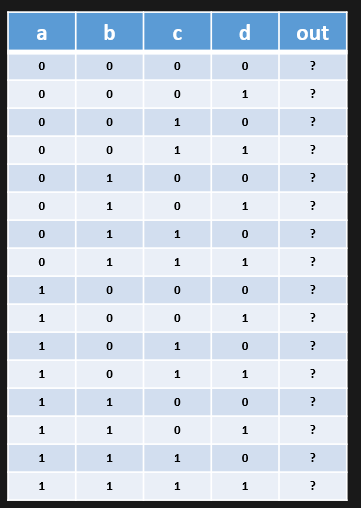
5K grid
Hardware description
-
Verilog / VHDL
- HDL file 🡆 Yosys 🡆 NextPNR 🡆 OpenFPGALoader 🡆 FPGA
-
Silice
- https://github.com/sylefeb/Silice/
- Thin abstraction above Verilog
algorithm main(output uint8 leds) {
uint28 counter(0);
always {
leds = counter[20,8];
counter = counter + 1;
}
}
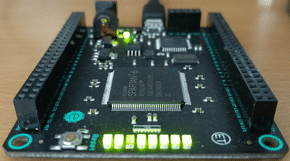
Is 5K a lot?
-
Let’s compare to MiSTer
- FPGA based hardware recreation
- Amiga, NES, SNES, Megadrive, Atari, …
-
De10-nano board, CycloneV FPGA
- 110K logic cells
- 🡅
- Also much faster (MHz ++)
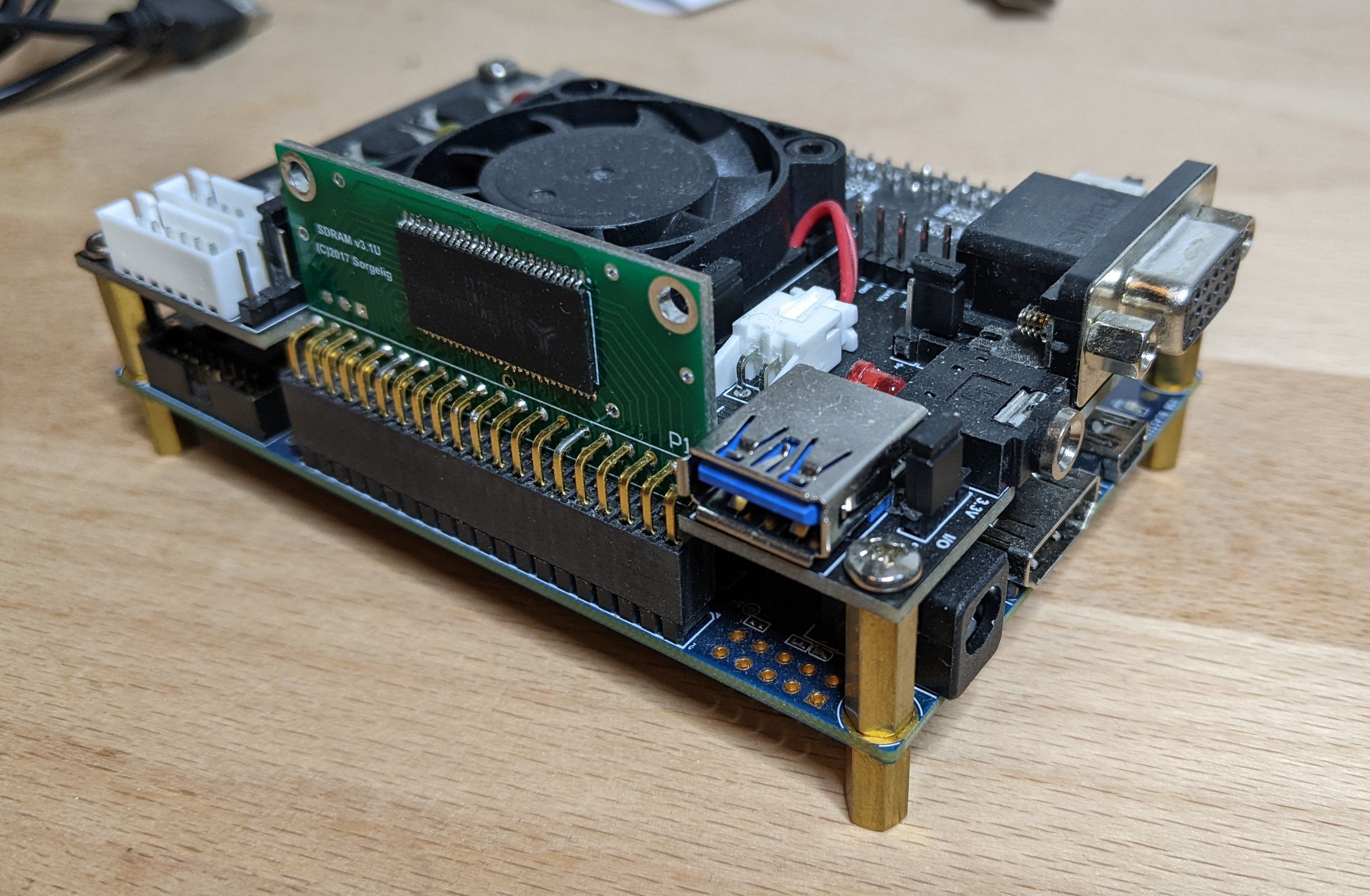
Impossible?
Doom on IceBreaker
by Sylvain ‘@tnt’ Munaut

Doom on IceBreaker
by Sylvain ‘@tnt’ Munaut

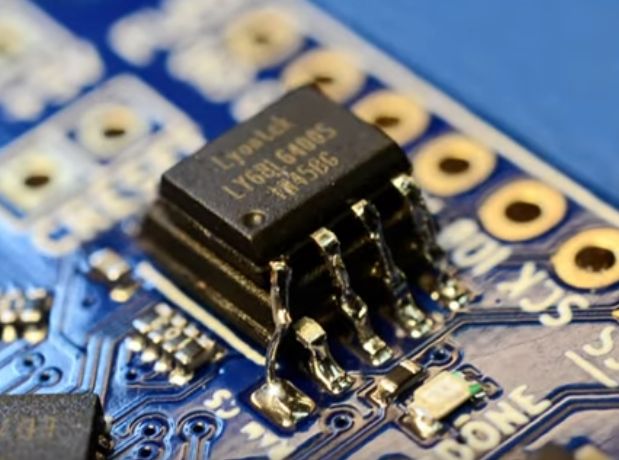
-
Source port
-
Architectured around RISC-V
- 25MHz CPU - VexRiscV
-
Pseudo SRAM mod
- Extra RW memory (8MB)
- QPI 100 MHz
-
FPGA 128KB SPRAM:
- 64KB cache / 64 KB framebuffer
Doom on IceBreaker
by Sylvain ‘@tnt’ Munaut
Doom on IceBreaker
-
Sets quite a standard!
-
But there is no GPU 😢
-
🡆 Could we do faster at full 320x200?
-
🡆 Can we provide a drawing ‘API’?
-
🡆 Can we squeeze a voxel terrain in?
-
🡆 Without the PSRAM mod?
-
Oh, btw
Memory Layout
Memory Layout
-
Constraints recap:
- 128KB of fast internal memory (SPRAM)
- 16MB of slower read only external memory (SPIflash)
-
What we would need:
- 320x200 framebuffer (256 palette) 🡆 64KB
- Level and texture data (E1M1 🡆 3.1MB, 35KB for level)
- Some KB of RAM for the CPU part, data-structures, etc.
Memory layout
- Conclusions:
-
– Textures can only go in SPIflash, good news, RO
-
– Level is not strictly RO, could go to RAM
-
🡆 But this would leave us with < 32KB for runtime
-
128KB - 35KB(level) - 64KB(framebuffer)
-
Framebuffer
-
A portable console
- Uses a small LCD/OLED screen (SPI protocol)
- These have an internal framebuffer!
-
Still
- Random access is slow
- 🡆 To achieve this, we have to stream pixels

Streaming pixels
-
Means rendering top/bottom or left/right
- Can hold a single row/column in memory
-
We’ll use left/right, rendering columns
- There are several reasons, see later
Rendering like it’s 1990
Drawing Textured triangles
Incorrect interpolation
Perspective correct texturing
Perspective correct texturing
Per-pixel division
-
Cost of a division
-
🡆 A standard design is 1 cycle per bit
-
🡆 More bits per cycles costs logic and/or MHz
-
🡆 Fine in a few vertices
-
Perspective correct?
-
You could choose to not be perspective correct
-
But … nah (PS1 anyone?)
Are we Doomed?
Special cases to the rescue
-
Vertical / horizontal surfaces!
-
Z-constant along screen columns / rows
- 🡆 Single division for all pixels
Walls
Flats (floors and ceilings)
// R_DrawSpan
// With DOOM style restrictions on view orientation,
// the floors and ceilings consist of horizontal slices
// or spans with constant z depth.
// However, rotation around the world z axis is possible,
// thus [..] has to traverse the texture at an angle
Flats column by column?
Flats column by column?
Other advantage
of columns
- Depth and visibility
Other advantage
of columns
-
Depth and visibility
-
Doom levels are organized in a BSP tree
- 🡆 Order the walls from viewpoint (also, localization and collisions)
- 🡆 Read all from the Black Books (M. Abrash, F. Sanglard)
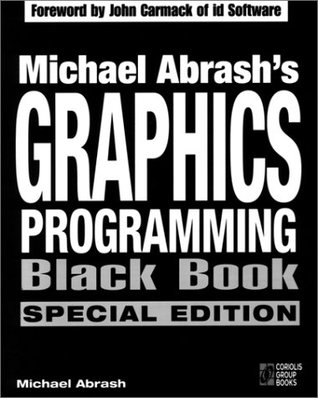

Doom
- Front-to-back ordering from BSP-tree
- But we don’t want to draw everything each frame

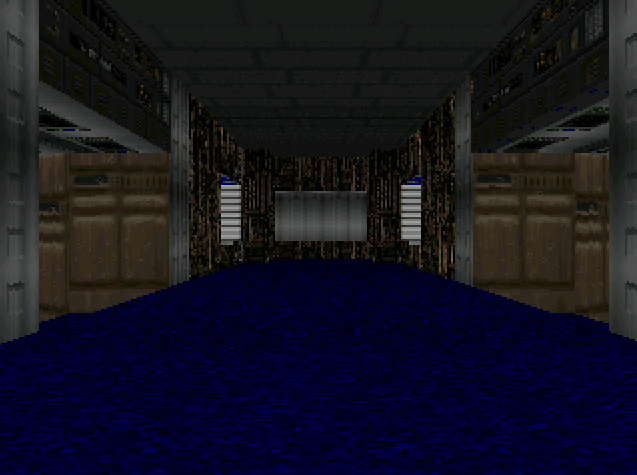
Visibility

Doom
- Front-to-back ordering from BSP-tree
- But we don’t want to draw everything each frame
- 🡆 Allows to render front to back and stop early

2D as seen from above

2D as seen from above
The Terrain
The terrain

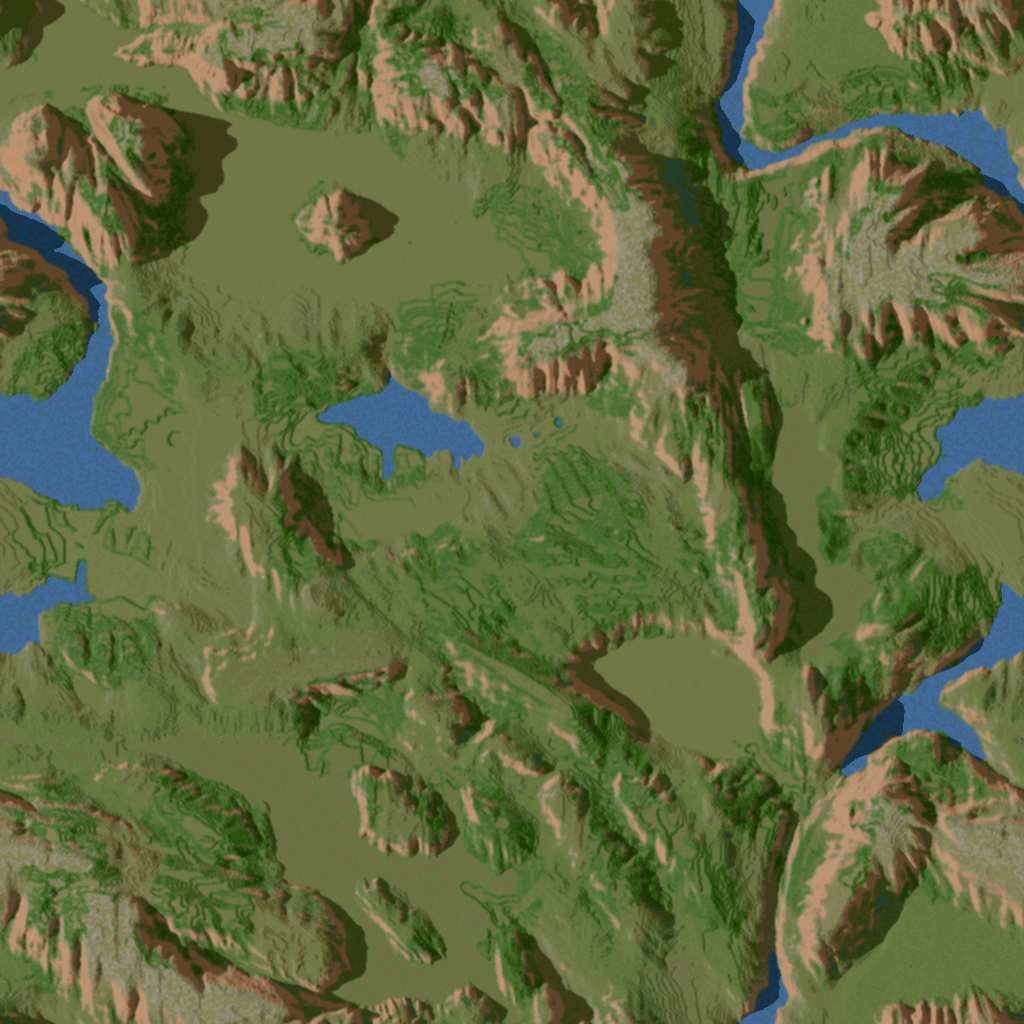
The terrain
The terrain
Rendering with columns
Rendering with columns
-
Go through the scene BSP
- 🡆 Sorted list of all potentially visible walls
-
Project candidate walls on screen
- 🡆 Gets a first/last column
-
For each screen column
- 🡆 Traverse walls
- 🡆 Draw a segment if covered
- 🡆 Lower / Upper / Middle
- 🡆 Stop if middle is drawn
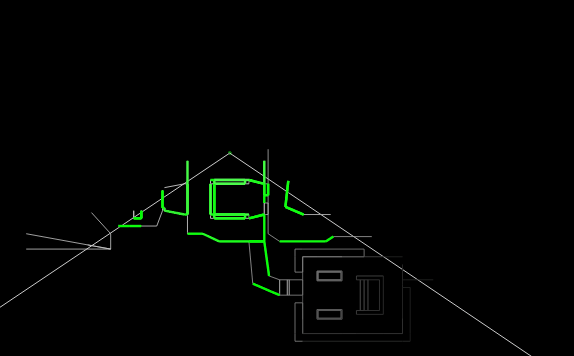
Rendering with columns
for (int c = 0 ; c != doomchip_width ; ++c) {
// ..
for ( ; v < v_end ; ++v ) {
if (c >= vis[v].i0 && c <= vis[v].i1) {
// lower wall
if (bspSegs[seg].lwr) {
// ..
}
// upper wall
if (bspSegs[seg].upr) {
// ..
}
// middle wall
if (bspSegs[seg].mid) {
// ..
// close column?
if ((bspSegs[seg].flags&1) == 0) {
// ^^^^^ transparent?
top = btm; // opaque, close column
break;
}
}
}
} }
Graphics hardware
Software / Hardware
Our renderer design tradeoffs
Software / Hardware
Software / Hardware
Software / Hardware
Software / Hardware
- CPU side:
- 🡆 View
- 🡆 Perspective
- Hardware side:
- 🡆 Column drawing (walls, flats, terrain)
- 🡆 Texturing
Column texturing hardware
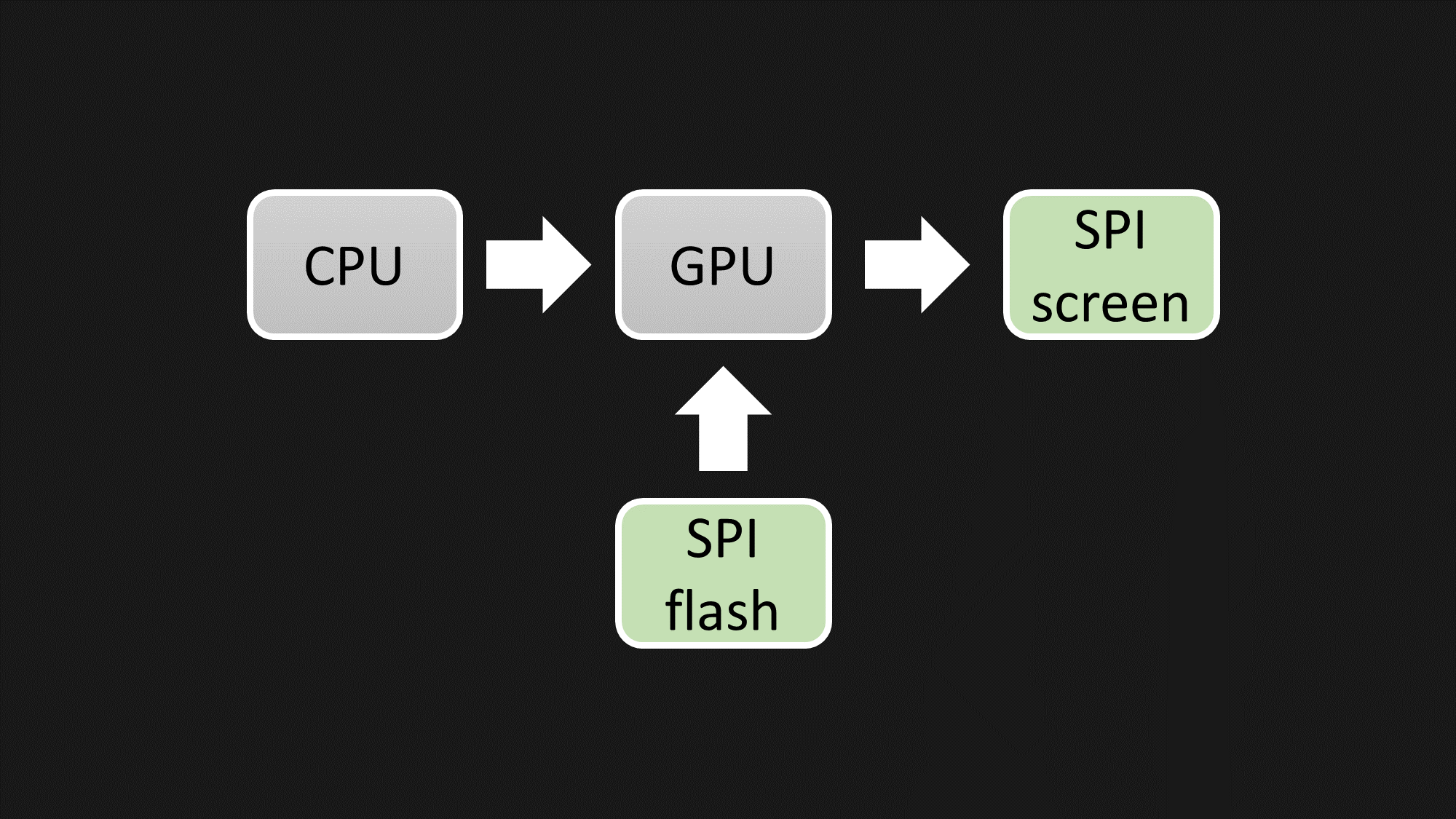
Draw queue (HW)
Draw queue (CPU side)
// draw column command
volatile unsigned int* const COLDRAW0 = (unsigned int* )0x40014;
volatile unsigned int* const COLDRAW1 = (unsigned int* )0x40010;
static inline void col_send(unsigned int t0,unsigned int t1) {
*COLDRAW0 = t0; *COLDRAW1 = t1;
}
// ceiling with flat texturing
col_send(COLDRAW_FLAT(-sec_c_h,cx),
COLDRAW_COL(bspSectors[sec].c_T,c_h,top, seclight) | FLAT);
// upper wall
col_send(COLDRAW_WALL(y,tex_v,tc_u),
COLDRAW_COL(bspSegs[seg].upr, c_o,top, seclight) | WALL);
// terrain
col_send(COLDRAW_TERRAIN(start_dist,end_dist,pick),
COLDRAW_COL (terrain_texture_id, btm, top, 15) | TERRAIN);
// end of column (EOC)
col_send(0, COLDRAW_EOC);
Draw queue (HW side)
// memory mapping
if ((prev_mem_wenable != 0) & prev_mem_addr[16,1]) {
switch (prev_mem_addr[2,4]) {
case 4b0001: {
if (prev_mem_addr[0,1]) {
// received COLDRAW0
coldraw.in_tex0 = prev_mem_wdata[0,32];
} else {
// received COLDRAW1
uint8 start <: prev_mem_wdata[10,8];
uint8 end <: prev_mem_wdata[18,8];
uint1 empty <: start == end;
uint1 eoc <: prev_mem_wdata[9,1];
// send segment to drawer
coldraw.in_tex1 = prev_mem_wdata[0,32];
coldraw.in_ready = ~empty | eoc; // not null or eoc tag
}
}
// ..
Column texturing hardware (HW)

Column texturing hardware (HW)
Column drawer (HW)
algorithm column_drawer(
input uint1 in_ready, // pulse
input uint32 in_tex1,
input uint32 in_tex0,
output uint1 scr_send(0),
output uint17 scr_data,
input uint1 scr_full,
output uint1 fifo_empty,
output uint1 fifo_full,
output uint8 pickedh,
spiflash_user sf,
input view vw,
) <autorun> {
$$log_n_fifo = 8
$$n_fifo = 1<<log_n_fifo
simple_dualport_bram uint64 fifo [$n_fifo$] =uninitialized;
simple_dualport_bram uint12 colbufs[$1 << (doomchip_height_p2+1)$] =uninitialized;
// ...
Column drawer (HW)
segment_drawer drawer<reginputs>(
colbufs <:> colbufs,
sf <:> sf,
vw <:> vw,
pickedh :> pickedh,
);
column_sender sender<reginputs>(
colbufs <:> colbufs,
scr_send :> scr_send,
scr_data :> scr_data
);
Column drawer (HW)
always {
// ..
if (in_ready) {
// store draw command in FIFO
fifo.wenable1 = 1;
fifo.wdata1 = {in_tex0,in_tex1};
fifo.addr1 = fifo.addr1 + 1;
// ..
} else {
if ( ~is_empty & ~drawer.busy /*..*/ ) { // process next
uint1 draw_seg <:: ~eoc;
uint1 send_col <:: eoc & ~sender.busy;
// ..
// draw the next segment?
drawer.in_start = draw_seg;
// send the column?
sender.in_start = send_col;
draw_buffer = send_col ^ draw_buffer;
// ..
fifo.addr0 = (draw_seg | send_col) ? fifo.addr0 + 1 : fifo.addr0;
}
}
}
Graphics hardware
Segment drawer
-
Responsible for drawing
- – Walls
- – Flats
- – Terrain
-
All of this is interleaved in the same logic
-
Pipeline running in parallel
- – Texture sampler (color from uv)
- – Per-pixel computations (next uv)
Segment drawer
algorithm segment_drawer(
input uint1 in_start(0), // pulse
input uint32 in_tex1,
input uint32 in_tex0,
input uint1 buffer, // which buffer?
simple_dualport_bram_port1 colbufs,
output uint1 busy(0),
output uint8 pickedh,
spiflash_user sf,
input view vw,
) {
// ..
Segment drawer
sampler2D sampler_io;
texture_sampler sampler(sf <:> sf, smplr <:> sampler_io);
// BRAM for single column depth buffer
simple_dualport_bram uint16 depths[$doomchip_height$] = uninitialized;
// BRAM for 1/y table (flats, terrain)
bram uint16 inv_y[2048] = {
65535,
$$for hscr=1,2047 do
$math.round(65535/hscr)$,
$$end
};
uint8 tex_id <: in_tex1[0,8];
uint8 col_start <: in_tex1[10,8];
uint8 col_end <: in_tex1[18,8] > 8d$doomchip_height-1$
? 8d$doomchip_height-1$ : in_tex1[18,8];
Segment drawer
// multiply and add
int24 result <:: (a * b) + c;
// goes through transform computations
// for both flats and terrain columns
// (sampler works in parallel)
always {
switch ({terrain,state})
{
case 1: { // ---- computes v (flats)
a = __signed(inv_y.rdata); //_ 1/y_screen
b = __signed(in_tex0[0,14]); //_ *h
c = {24{1b0}};
}
case 2: { // ---- computes u (flats)
mul_d = result >>> 6;
a = __signed(mul_d); //_ h/y_screen
b = __signed(in_tex0[16,16]); //_ *x_screen
c = {24{1b0}};
}
// ..
}
state = state[3,1] ? state : (state+1);
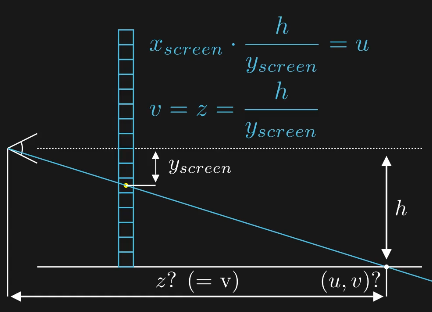
Segment drawer
if (in_start) {
end = terrain ? col_start : col_end;
current = col_start;
drawing = 1;
// bind texture
sampler_io.do_bind = (tex_id != sampler_io.tex_id);
sampler_io.tex_id = tex_id;
// init tc_u and tc_v
tc_u = __signed( in_tex0[24,8] );
tc_v = terrain ? __signed({in_tex0[16,11], 8b0})
: __signed({in_tex0[16, 8],11b0});
// ..
} else {
if (smplr_delay[$delay_bit$,1]) {
// a texture sample is available
drawing = still_drawing;
sampler_io.do_fetch = still_drawing;
state = 0;
// ..
} else {
smplr_delay = (drawing & sampler_io.ready)
? {smplr_delay[0,$delay_bit$],smplr_delay[$delay_bit$,1]}
: 1;
} }
SPI flash
- QPI mode (4 wires used as IO)
- Controller setup:
- Each access sends address
- Returns one byte
- Running 50 MHz, could go up to 100 MHz!

CPU

CPU
- RISCV RV32I
- dual core design
- compact (~ 1K LUTs)
- Modified:
- 1 cycle shifts
- 1 cycle MUL
- 34 cycles DIV
- 25 MHz
- 4 cycles per instruction
- More like 6.25 MHz ...
- (but two cores)
Recap
Hardware specs
-
Dual-core 6.25 MHz RISCV RV32IM-ish CPU
-
320x240 SPI screen (LCD)
-
16MB SPI flash
-
128KB fast RAM (FPGA SPRAM)
-
Column drawer GPU with walls, flats, terrains

How much code is that?
-
Hardware: ~ 1700 lines of Silice
-
Firmware: ~ 1400 lines of C
(comments and all)
But does it work?
Synthesis, resources, MHz
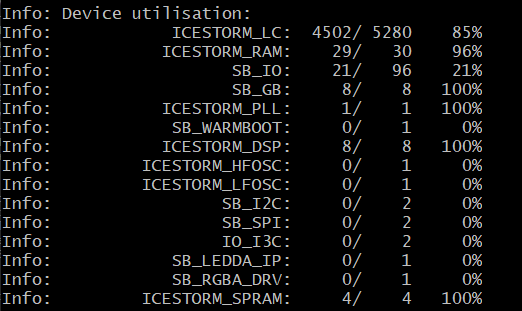
MHz: 23-24/50-60 for main design, runs at 30/60 MHz
Fun fact:
How can we know the terrain height?
-
We can’t from the CPU
-
So we ask the hardware
CPU side
int pick = (col == 160 && start_dist == 0) ? PICK : 0;
col_send(
COLDRAW_TERRAIN(start_dist,end_dist,pick),
COLDRAW_COL (terrain_texture_id, btm, top, 15) | TERRAIN
);
Hardware side
pickedh = pickh & ~pickh_done ? sampler_io.texel : pickedh;
pickh_done = 1;
Gotchas
- SPI in quad mode, can no longer program!
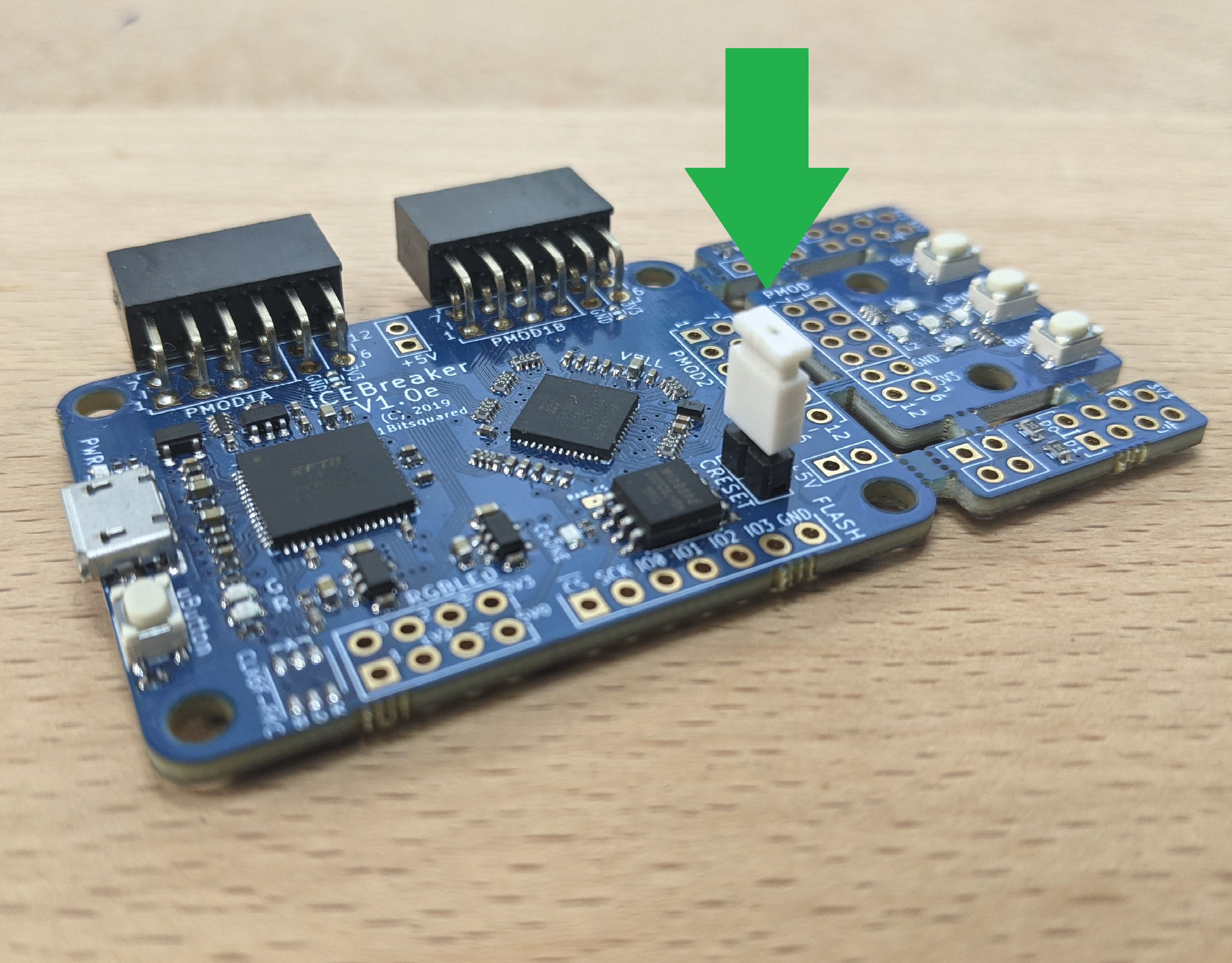
Gotchas
- DSP synthesis had a small bug
- Took a deep dive into Yosys to fix!
Gotchas
- Fixed point is not specially easy

How to survive?
Use simulation
Icarus Verilog and Verilator
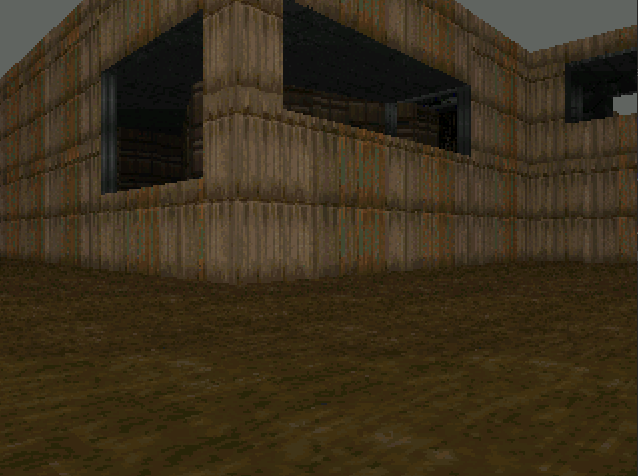
What’s to improve
-
SPI flash could run at 100 MHz (texturing x2!)
-
Sprites …
-
Fixed point is not everywhere robust
-
API, documentation
So stay tuned! Follow @sylefeb
